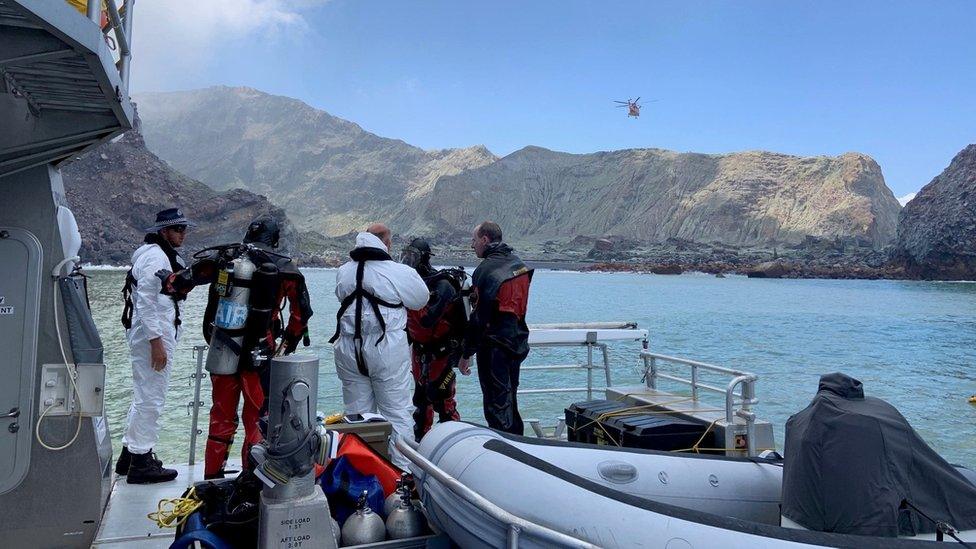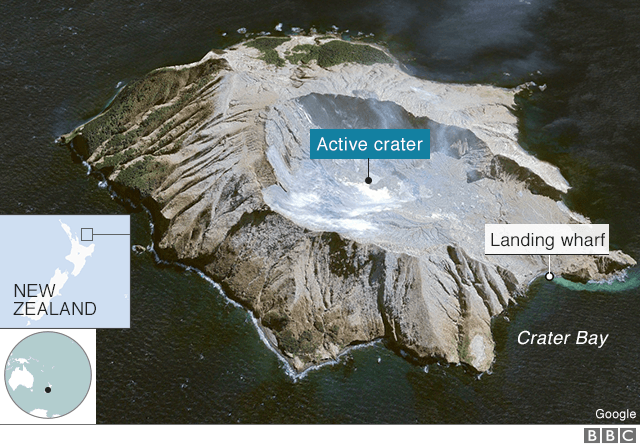New Zealand volcano: Krystal Eve Browitt named as victim
- Published

Ms Browitt was reportedly an Australian veterinary student
Police have officially named the first victim of the White Island volcano eruption in New Zealand, as recovery efforts continue.
Krystal Eve Browitt was a 21-year-old Australian, external from Melbourne who was visiting the island with her family.
Father Paul and sister Stephanie are both in hospital with serious injuries.
Fifteen deaths have now been confirmed after Monday's eruption, while about 20 people are in intensive care with severe burns.
Police said on Saturday that the latest victim died at Waikato Hospital, external.
The authorities released Ms Browitt's name on Saturday after informing her family.
While friends and families have announced the loss of their loved ones, the 21-year-old Australian is the first victim formally identified by the police.
Police divers meanwhile resumed their search in the area around White Island, also known by its Maori name of Whakaari.
Conditions in the water were "not optimal", with visibility between zero and two metres (6.5ft) in some places.
"The water around the island is contaminated, requiring the divers to take extra precautions to ensure their safety, including using specialist protective equipment," Deputy Commissioner John Tims said in a statement, external. "Each time they surface, the divers are decontaminated using fresh water."

Divers are searching the waters around White Island volcano
The divers, Mr Tims added, also reported seeing a number of dead fish and eels washed ashore and floating in the water.
The retrieved bodies will be examined in Auckland by experts including a pathologist, a forensic dentist and a fingerprint officer. "This is a long and complex process and we are working as quickly as possible to return loved ones to their families," Mr Tims said.
Police will gather information about possible victims, such as descriptions of appearance, clothing, photos, fingerprints, medical and dental records and DNA samples. These details will then be matched to the evidence gathered in the post-mortem examination.
How did Friday's operation unfold?
The remains of six bodies were recovered in an operation on Friday and sent to Auckland to be identified.
Police launched a "high-speed" retrieval even though the risk of another eruption remained. Going in, authorities knew the location of six of the missing and those bodies were airlifted off the island.
A team of eight specialists from the New Zealand Defence Force flew by helicopter to the island and spent four hours retrieving the bodies. They were taken to a naval patrol boat and then brought back to the mainland.
Volcanologists had warned that if the volcano erupted while they were on the island, the team could face magma, superheated steam, ash and rocks thrown at high speed. The specialists who went to the island wore protective clothing and breathing apparatus.

Speaking to reporters after the bodies were retrieved, Prime Minister Jacinda Ardern said questions over why people were allowed to visit the active volcano "must be answered, and will be answered".
But she said "we also need to respect the phase we're in now, with families only just getting their loved ones back".
How were the others saved?
Out of the 47 people on the island when the eruption happened, 24 were from Australia, nine from the US, five from New Zealand, four from Germany, two from China, two from the UK, and one from Malaysia.
After the eruption, most of the visitors were taken off the island in dramatic rescue efforts. Some tourist boats already on the way to the mainland turned back to take in those stranded.
Meanwhile, commercial pilots headed back to the island - as the eruption was ongoing - to look for survivors. Many of those who made it off the island were severely injured and burnt.
"Toxic gases and ash": The BBC's Shaimaa Khalil flies around White Island